One of your worries as a farmer who keeps sheep is the right sheep feeder to use for your flock. It may seem like an easy decision to feed your sheep, but it becomes a challenge you have to face when your sheep begins to pick their feed off the ground that has been contaminated with their waste. Ordinarily, they will eat the hay you give them off the ground, but when it touches their dung, your sheep will not eat it, leading to a waste of resources.
Sheep feeders are the equipment that helps you conserve the amount of feed your flock consumes by reducing waste and giving them more feed for their nutritional benefit. It also helps to keep your flock healthy as they are free from ingesting pathogens that may have come in contact with their feed.
With the goodness there is to benefit from using a sheep feeder in your backyard farm, there are things you should consider before you purchase one. This article will help you understand the reasons you should consider using sheep feeders, the different types of sheep feeders that are available for you to choose from, how you can choose the best sheep feeder, and we will provide you some options you can choose from.
If you’re looking for our comprehensive starter guide on raising sheep we have a complete article that will help you on many different topics.
Why Do You Need a Sheep Feeder?

Your flock of sheep may not mind having their feed on the floor and feeding off the floor. However, it is a common occurrence that the hay that is at the base of the bale is usually wasted. Not because your flock got tired of it, but because by the time they get around to it, it has become unpalatable for them. With a sheep feeder, you can address this situation.
Here are some of the reasons you should consider using a sheep feeder for your sheep.
Feed conservation
The only thing more crippling to a livestock venture, no matter how small, apart from buying expensive feed, is wasting the feed. If it costs so much to purchase feed for your sheep, then, they should be able to eat that feed well, and effectively use it. However, it becomes disadvantageous when the feed goes to waste.
Hay is becoming scarce by the months, mostly due to the unpredictable and unfavorable climatic conditions that now prevail in some areas. A farmer will hardly have any hay left to sell after getting the one for home use. Due to the nature of hay, it begins to deteriorate the moment it touches the floor.
Your sheep, although not so smart, is smart enough not to eat decaying hay that is usually at the bottom of the bale. This leads to wastage of feed. However, this can be avoided if the hay is placed in a feeder, helping it avoid decay, and making it available for your sheep to eat. That way, you are happy there’s no wastage.
Saves Feeding Cost
Still, on the feed wastage, it becomes easier for you to save on feeding your sheep since they will have more hay to feed on for longer, compared to when the hay is on the floor and gets decomposed. You can divert the resources used for replacing decayed hay to other beneficial needs of your flock.
A sheep feeder may cost you some money, but it remains in place and its use and benefits remain for a long time, making it a good long-term investment for your backyard sheep farm.
The good thing about the sheep feeder is that it doesn’t have to be fancy and you can easily make some by yourself.
Easier Lamb Feeding
One of the challenges of raising livestock is providing the little ones, in the case of sheep, the lambs, with adequate nutrition to help them grow fast and improve their immunity against the ever-present pathogens.
Lambs are just learning the ropes and need to be guided on where to eat, especially when they are to be separated from the ewe. One of the best ways to help lambs learn and adapt to feeding on grains and other feed is to present it to them in feeders.
Ordinarily, some lambs do not feed on the ewe naturally, due to reasons that may range from rejection by the ewe to death of the ewe, and so on. Using a lamb feeder helps them get access to the nutrient they would have otherwise been denied.
Better Nutrition
Both lambs, rams, and ewes, need to be adequately fed to help them meet the nutrient requirement they need. The better their nutrition, the healthier they are, and the more productive they become. Therefore, with less feed wastage, better access to feed, and more feed consumption, made possible by sheep feeders, the flock has better nutrition than when their feed is thrown on the floor.
Feed supplements such as minerals that are powdery are better mixed with your flock’s feed when they are served in a sheep feeder. Otherwise, the mineral, alongside the feed mostly wastes.
Easy Feed Management
For you as the caregiver of your flock, it can be difficult to always have to watch the state of the hay bale whenever you come in to check on your flock. You always have it at the back of your mind that once the bale gets to a certain level, it becomes waste. What’s worse is you cannot use it as bedding because it has begun to decompose, so you get rid of it, probably in making compost.
However, with a sheep feeder, you are sure you do not have to constantly worry about hay decomposing. You can also easily mix supplements with feed, give your flock more feed choices such as grains, and make feeding more fun for them.
Types of Sheep Feeder
To get the best from sheep feed and feeders, you need to use the right sheep feed for your flock. Usually, different types of sheep feeders suit different farming purposes and designs. For instance, a backyard sheep farm is not expected to install a sophisticated feeder as a commercial farm will. However, the sheep feeders might work on the same principles.
Some of the different types of sheep feeders include:
Hay Feeder
Hay feeders for sheep are one of the most controversial sheep feeders among livestock. This is because some farmers think it is too expensive for the percentage of hay waste it prevents. Hay feeders are sheep feeders that are specifically used for supplementary or substitution feeding, that is, they are used when grazing on pastures is impossible due to season or preservation of the soil ecology.
Hay feeders are available in different shapes and sizes, but they are mostly used for sheep that are of age. Lambs may use hay feeders but not as easily as the mature sheep. However, some hay feeders make provision for young sheep, helping them have better access to hay, at extra cost.
Hay feeders can be cone-shaped, round, or made with a tapering base to hold in the hay. The idea behind every design is to hold the hay away from the floor and provide space for the sheep to pull hay out of the bale.
Grain Feeders
Grain feeders are sheep feeders that can also be used by other livestock, such as goats. They are used to supply grain supplementary feed to sheep, to make up for the energy deficiency in their diet. Usually, sheep rely on pasture to get all the nutrients they require. However, there are some times of the year when they have limited access to the grasses in the pasture and need to supplement for energy by consuming grains.
In your backyard farm, grasses may become unavailable, and your sheep may need to feed on cereal grains to keep their productivity level. In this case, they need to make the best of the grains they have as wastage will be detrimental to their productivity. Therefore, grain feeders help to reduce the waste of grains.
Some grain feeders are made with an A-frame structure, others are simply made like benches, while some have covers and automatically dispense grains to the flock when they have exhausted the available batch.
Also, grain feeders are usually long and can accommodate more than one sheep at a time. This means that, regardless of the size of your flock, there is a grain feeder that can accommodate them.
Feed Bunk
The bunk sheep feeder is a simple supplementary feed feeder design that involves minimal labor and to some extent, helps to reduce the wastage of feed. Generally, it is the provision of feed either on a level or height that the sheep can reach only by stretching their neck through horizontal spaces.
There are different types of bunk feeders based on design, and they include
- H-bunk feeders
- J-Type bunk feeders
- Table bunk feeders
These bunk feeders, depending on the type usually have the issue of space wastage, especially if you are limited on space. However, it makes feeding your flock easy.
Creep Feeder
It is easier to feed mature and older sheep with any type of sheep feeder you choose, but what about the lambs? They require nutrition too; however, you can argue that they will get all the nutrition they need from the ewes. While this may be true, they can fetch you better money if you help them grow faster by giving them a chance to nibble at feed before they are weaned.
Creep feeders have low clearance and are usually low enough for lambs to feed on. Some have wheels that make it easy to transport them. However, their major advantage is in the weight gain it gives the lambs.
Generally, creep feeding involves feeding lambs in an enclosure, barring them from venturing into a pasture, thereby reducing their risk of developing worms. A creep feeder is an equipment that makes creep feeding easier. This is more pronounced in a flock where there is low milking and multiple births.
Fence-line Feeder
Fence-line feeders are adequately described by the name. They are feeders that are usually installed along the fencing holding a flock from exiting their stalls. These feeders usually hold different forms of feed. They range from grains to minerals, a mixture of these two, and sometimes, roughages.
They are usually shaped like troughs and they are continuously lined along the fence where the flock is large. Fence-line feeders are suitable for feeding a large flock at once and also require minimal labor. They can be installed at a height where the neck of the sheep can easily reach it or close to the ground where both adult sheep and lambs can access the feed.
How to Choose Sheep Feeder
Having known the different types of sheep feeders that are available and that not all sheep feeder types are suitable in every situation, let us see how you can make the right choice when it comes to sheep feeders.
Many factors determine the type of sheep feeder you should choose for your flock. Some of these factors depend on the type of housing design your sheep lives in and your budget. To be fair, sheep feeders can be costly, but they give you value for a long time.
Here are guidelines to help you choose the right sheep feeder.
Flock Age
The predominant age of your flock goes a long way in determining your choice of sheep feeder. A predominantly adult flock will need sheep feeders that do not require them to reach the floor for their feed. They are best suited with feeders such as fence-line feeders, bunk feeders, and other feeders that are suspended at least 60 cm off the ground.
However, if there are lambs in your flock, you will need feeders that commensurate with their height. They cannot use the adult sheep feeder; therefore, you need a sheep feeder that will help them get access to supplemental feed, during and after weaning, that is a creep feeder.
Also, the more the number of lambs you have, the more creep feeders you need to purchase.
Flock Size
How many sheep do you have in your flock? Is it a large flock or a small one? The size of your flock also determines the type of sheep feeder you should purchase. A flock of about 8 ewes and 2 rams is a sizable one and will have lambs at different times of the year. Therefore, you need to purchase sheep feeders for both adult sheep and lambs.
Also, the more the number of sheep you have, combined with your budget and purpose of raising sheep determines the type of feeder you should get. Sheep raised for wool production is best fed using table bunk feeders to avoid wool contact with the feed, while meat producers prefer to use the J-bunk feeder.
Type of Supplemental Feed
Concerning the nature of the supplemental feed you will be giving to your flock, there are sheep feeders that suit your purpose. A flock that will be given hay as supplemental feed, with the assurance that it will meet the nutritional needs of the flock, will not need grain feeders. They only need hay feeders.
However, if the flock will need a balance of energy and protein, you may need to purchase hay feeders and grain feeders. Also, the grain feeders will make it easier to feed your flock with feed supplements containing minerals, especially for the wool-producing flock.
Housing Design
The shelter is an important part of raising sheep. It is so important that it influences the type of sheep feeders for your flock. It is easier to manage your flock when they are housed in barricaded and wide stalls, except the rams – it is not advisable to keep them together. However, the ewes can easily live together in a stall. This makes feeding easier and you can choose a sheep feeder that feeds the ewes at once.
The rams can be fed from the same continuous feeder, such as the fence-line feeder even though they are in different stalls.
If your sheep house design involves feeding them in the open, you may have to buy several hay feeders to avoid fight and injury among the rams. Alternatively, you may have to feed them at different times, increasing your labor.
In essence, an open feeding is suitable for house designs that allow all members of the flock to loiter freely. However, feeding is easier with sheep feeders when the house design puts members of the flock in different stalls.
Tips on Feeding Lambs
Feeding lambs can be a tricky thing, especially when they weigh less than 4 kg at birth. The difficulty in feeding lambs increases when they are unable to stand to feed on their mother. This is usually because they don’t have the energy to do so. This is when the farmer’s help is required if the lamb is to be saved from death.
Use these tips to keep your lamb fed if they are refusing to be fed by the ewes or they are orphaned.
- If the lamb is yet to have colostrum after 48 hours of birth, get a vet to inject them with broad-spectrum antibiotics, followed by Protexin and Nutrigel, a few days later. However, if it’s been less than 48 hours of birth, you can feed them with some commercial colostrum milk brands. Follow the instructions on the brand label.
- While feeding them from bottles, take short 5 second breaks at intervals to ensure they are taking in enough air.
- You can feed your lambs with goat milk
- Leave the milk cold or at body temperature when feeding the lambs. Never give them overheated milk.
- Feed your lambs every 2 to 3 hours in their first and second week
- Ensure that they are ready to suck by putting your finger in their mouth. If it is warm and they suck on it, they are ready to be fed.
- Introduce them to hay as early as the second day. They will not eat it but will mouth it. However, by the second week, they will begin to consume it in small quantities.
- By the third week, gradually introduce them to pellets and chaffs.
- Continue feeding them until they are three times their birth weight. At this point, they must be about 10 weeks old.
Our Favorite Sheep Feeder
Little Giant Plastic Fence Feeder
The Little Giant Plastic Fence Feeder for Livestock, including sheep, is a durable plastic sheep feeder. It helps to reduce the waste of hay while your flock feeds. It is suitable for use both indoors and outdoors and is flexible in its use to fit your sheep housing design.
This feeder is a short feeding trough that is easy to hang on the fence of your sheep housing and on the bars that hold them in their stalls. It is easy to clean and makes your labor easier.
Pros
- It is easy to install
- Easy to clean
- It fits different sheep housing design
Cons
- It can feed only two sheep at a time.
Rugged Ranch Wall Mounted Livestock Hay Feeder
Hay feeder is essential to the growth and health of your flock if you are particular about preventing them from picking possibly contaminated feed off the shed floor. Rugged Ranch Wall-mounted Livestock feeder is an excellent hay sheep feeder for your flock.
It is rust-resistant because it is made from galvanized steel, assuring you of its longevity and durability. This hay feeder is also easy to attach to the walls of the shed or in the individual shed of your sheep. It helps them have unlimited access to hay and improves their nutrition.
You can also make your sheep feed in groups with this hay feeder as it can take more than one sheep feeding from it at a time.
Pros
- It is rust-proof
- It is durable
- Adaptable to different sheep housing design
- It is easy to transport and clean
Cons
- It can only feed a few sheep at a time.
Sydell Sheep and Goat Grain Mineral Feeder
As important as nutrition is in livestock raising, there is a possibility to overlook some nutrients such as minerals. Sometimes, when the carer provides it, the sheep ignores it because they are unfamiliar with it. However, there’s a solution to this as Sydell Grain and Mineral feeder will automatically help to provide them.
With this automatic feeder, your labor is reduced. You only need to fill the upper once and the grain will last for a long time. You can also mix the minerals and other feed supplements with the grain, helping your flock ingest the nutrients they are not getting enough of.
It uses a gravity-reliant system to continuously supply feed and it can be easily mounted on fences and walls. Its upper is tightly covered to stop water from entering it and messing up the supplemental feed.
Pros
- It reduces feeding labor
- Easy to mount on fences and installs
- It is made of heavy-duty plastic, making it durable
- The feed is protected from water
Cons
- It can only serve two sheep at once
Our Favorite Lamb Feeder
Lamb Milk Bottle Feeder
Milk is an important part of lambs’ nutrition for the first 10 to 12 weeks of their lives. However, it can be a challenge to feed lambs if the ewes are unwilling to feed them or they are too weak to stand and suck from the ewes. Lamb Milk Bottle Feeder is a lamb feeder that helps to supply the much-needed milk to the lamb, to help them survive and increase in strength.
This lamb feeder is made from strong plastic, establishing its durability. It also has a large capacity – 1 liter – enough to feed a calf for a whole day. It is also calibrated for smaller milk portions. This lamb feeder can withstand heat when the milk has to be heated. It also has a holder at the base from which it can be suspended for lambs to suck on the nipple.
The teat is rubber and can be easily removed and cleaned.
Pros
- Easy to handle due to its humanized design
- Durable plastic that can withstand heat
- Rubber teat to help lambs suck easily
- The nipple is easy to remove and clean
- It has a large capacity
Cons
- Its content may require reheating after some hours of use.
Cabilock Animal Feeding Bottle with Nipples
If you have a flock with many lambs, it will be strenuous to feed them all with a milk bottle. However, you can feed more than one at a time with little effort from you with the Cabilock Animal Feeding Bottle.
It is a large capacity feeding bottle – 8 liters – that will easily feed multiple lambs at once. It is made of durable plastic and it can withstand heat when the milk has to be warmed. This product eight silicone nipples the lambs can suck on to get the milk, and reduces your labor.
You can suspend the bottle off the floor by using the holes on either side of it to help the lambs swallow the milk better. The lid is easy to open and close, making cleaning easy, too.
Pros
- It has a large capacity tank
- Easy to clean
- Helps to reduce labor by feeding multiple lambs at once
- It has silicon nipples for easy sucking
Cons
- Might be unsuitable for a week and below old lambs.
Brower Galvanized Steel Animal Feeder
Lambs can’t feed on milk indefinitely; at a point, they have to start eating hay, grains, pellets, and chaff. However, not all sheep feeders can be suitable for them. Therefore, it is best to get feeders that will help them continue to have easy access to feed and maintain their good growth.
Brower Galvanized Steel Animal feeder is a creep sheep feeder that helps lambs have easy access to feed such as grains, mixed with minerals, pellet feed, and so on. The feed is poured into the large capacity tank. It drops to the access point for the lambs to pick.
This animal feeder is easy to clean and durable, due to the galvanized steel it is made from. It also reduces labor. You don’t necessarily have to fill it many times in a day due to its large capacity.
Pros
- It is rustproof and durable
- It has a large tank capacity
- Makes feed management easier
- It helps to reduce feeding labor
Cons
- Animal waste may get in the feed since it will be placed close to the floor for the lambs.
Feeder Cleaning Tips
It is important to maintain good hygiene with your flock. This extends to cleaning the feeding equipment your sheep use daily. While they feed from feeders, other animals, such as birds and rodents may eat from their feeder too, especially grain feeders. You should clean them to prevent the transfer of disease from the pests to your flock.
- Wash the plastic feeders with disinfectant solution and rinse them thoroughly afterward. Let it air-dry before next use.
- Wipe the metallic and wooden feeders with a cloth soaked in disinfectant solution. Repeat the same with a cloth soaked in ordinary water and let it air-dry.
- Remove the teats from lamb bottle feeders and soak them in warm water for about 5 minutes. Wash and rinse them.
- Wash the lamb milk bottles with warm water. Let it air-dry before you replace the nipples.
Frequently Asked Questions on Sheep Feeders
Some of the most common questions about sheep feeders are:
How High Should Sheep Feeders Be Placed?
Different breeds of sheep grow to different heights. However, as a general rule, make sure the feeder for your adult sheep stands above the ground at a distance of, at least, 60 cm. For lambs who are just getting introduced to solid feed or are just weaned, their feeders should be about 15 to 20 cm away from the floor.
How Do You Fatten Sheep Fast?
To fatten a sheep, the endeavor starts from a young age. Assuming they were fed by ewes till they were weaned, the lambs can be introduced to solid feed from the first week. By the second week, they will have started eating grains, helping them increase their fat and energy storage. Combined with the breast milk, they will have attained three times their birth weight by the 9th week. However, this has to be maintained by giving them feed formulation high in energy and fat.
However, it is best to leave the formulation to an animal nutritionist.
What Next?
Feeding your flock is important but feeding them with the right equipment is more important. Leaving your flock to feed on the floor is too risky for their health and it may cause losses to you. Therefore, ensure that you have the right feeders for your flock, depending on their needs.
Ensure that the sheep grain feeder, lamb feeders, and all other types of feeders are well cleaned, routinely.

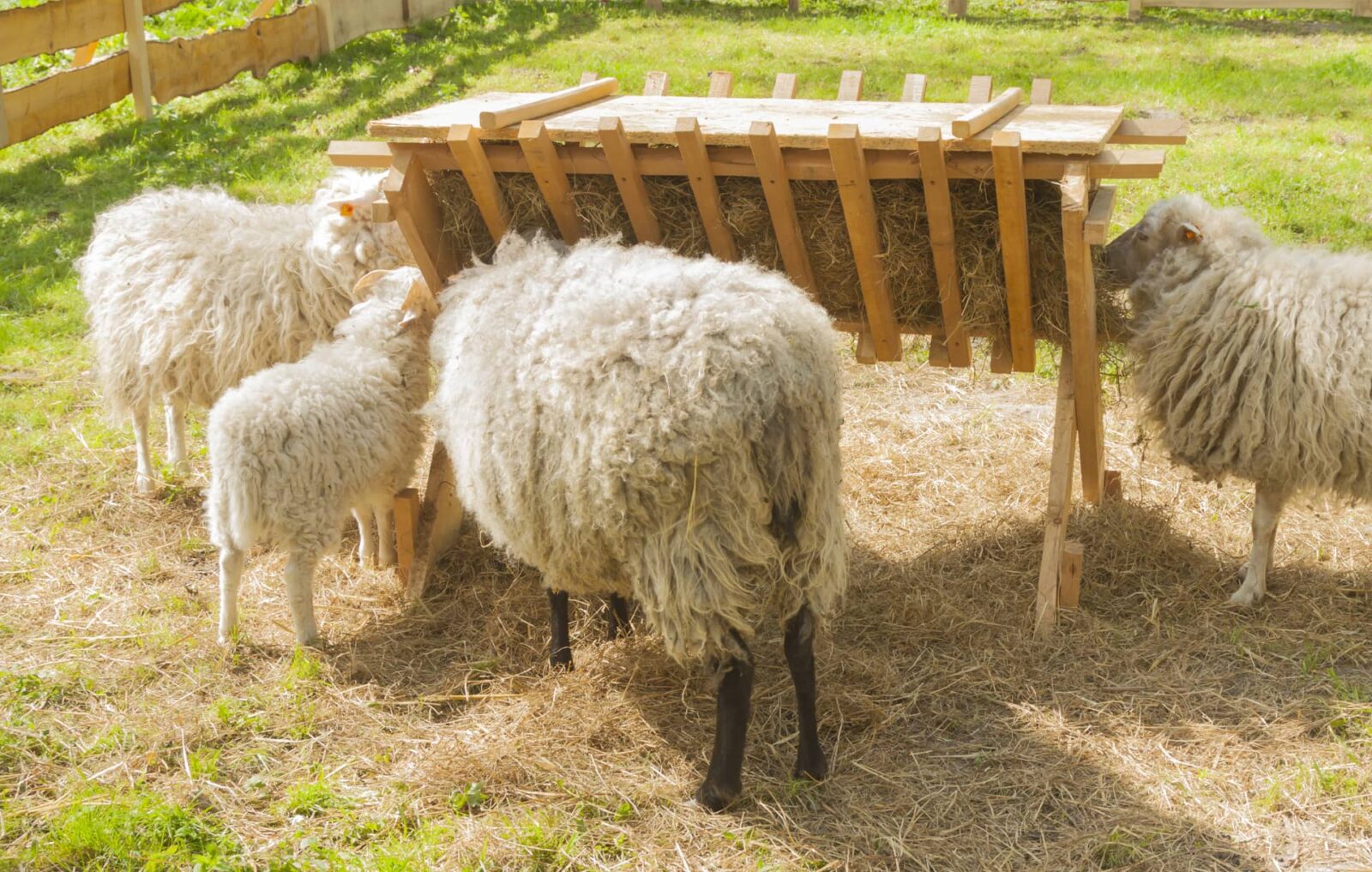






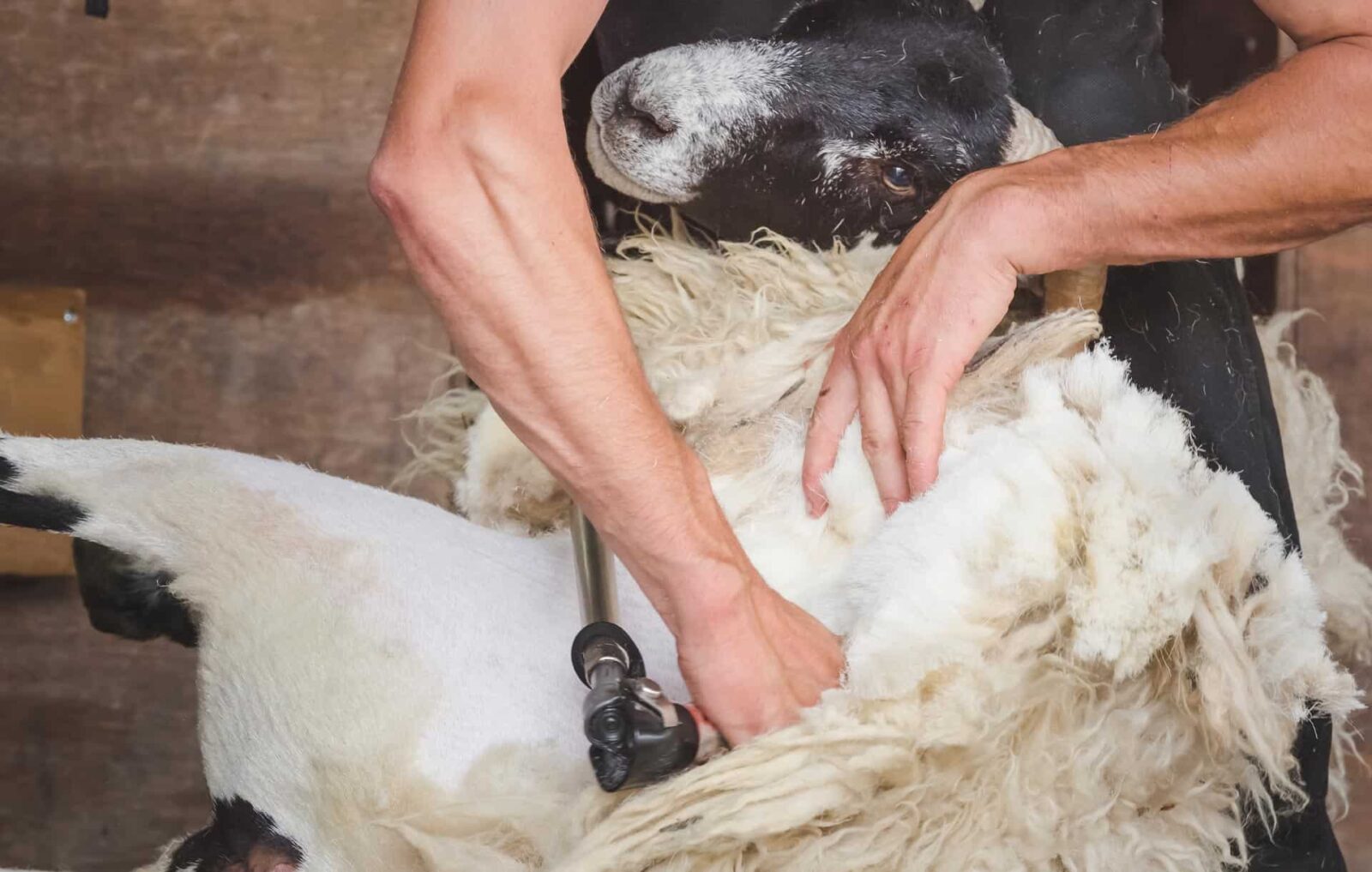
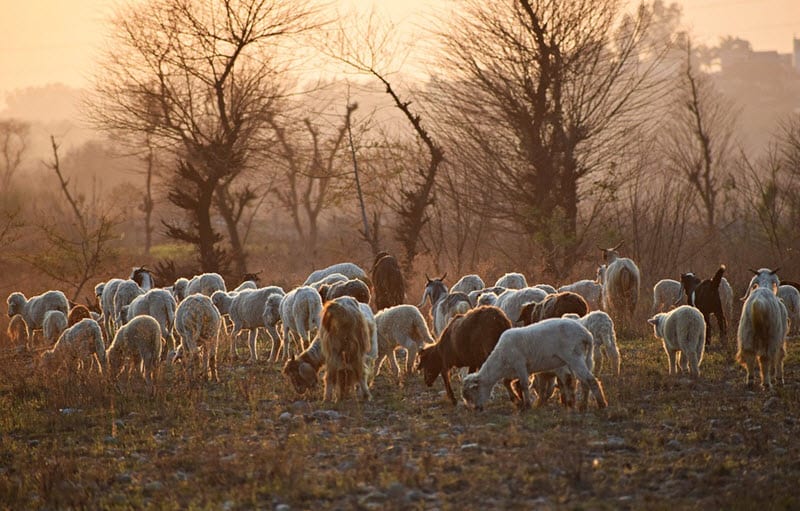

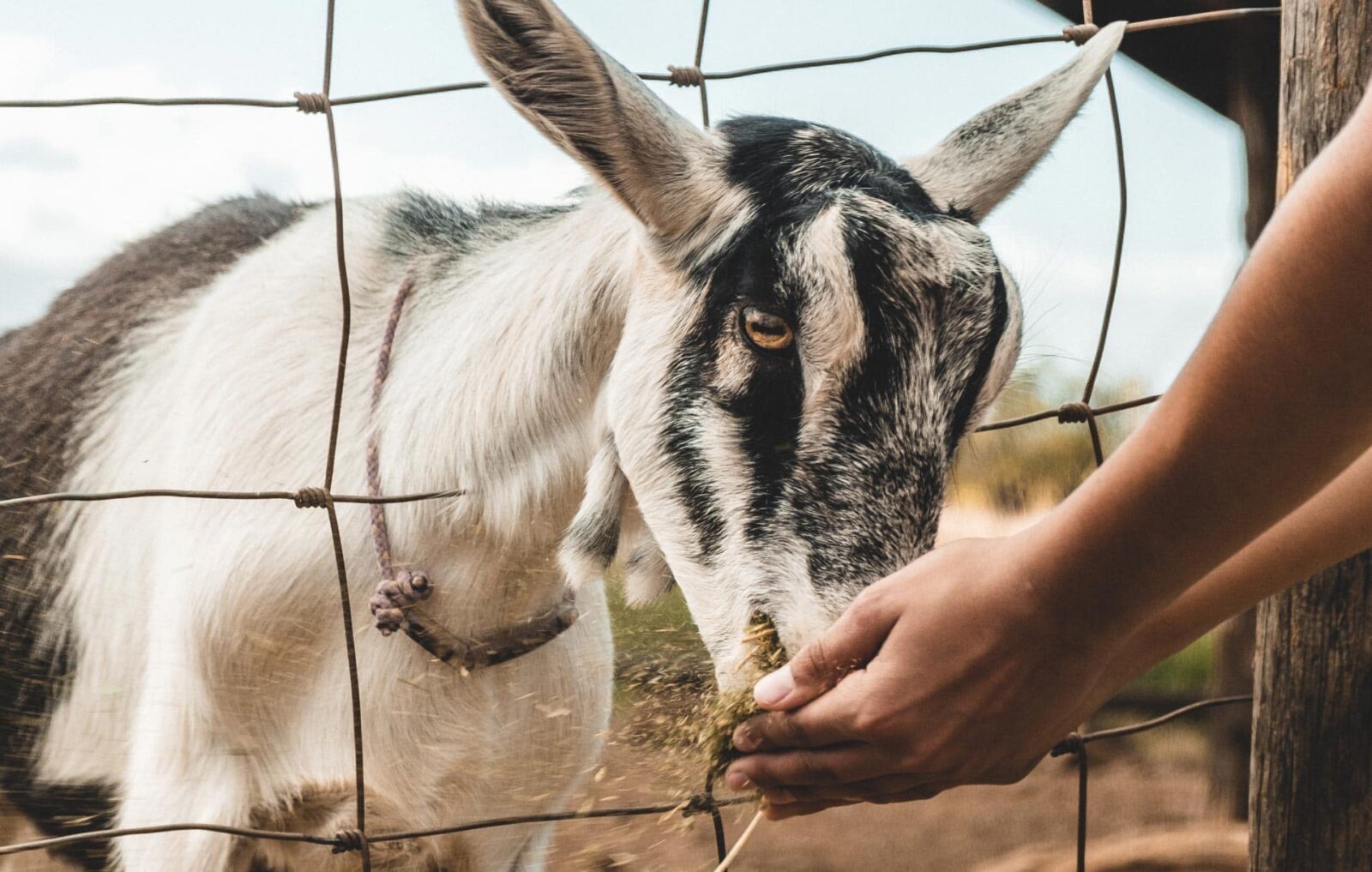




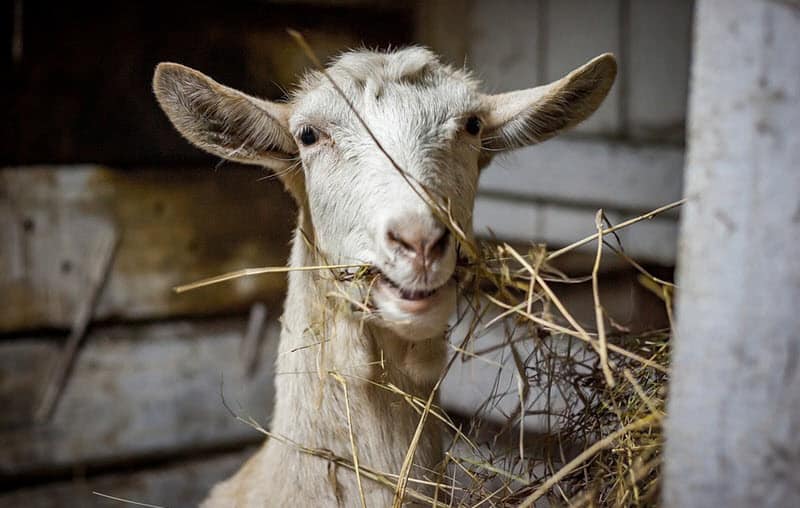


Leave a Reply